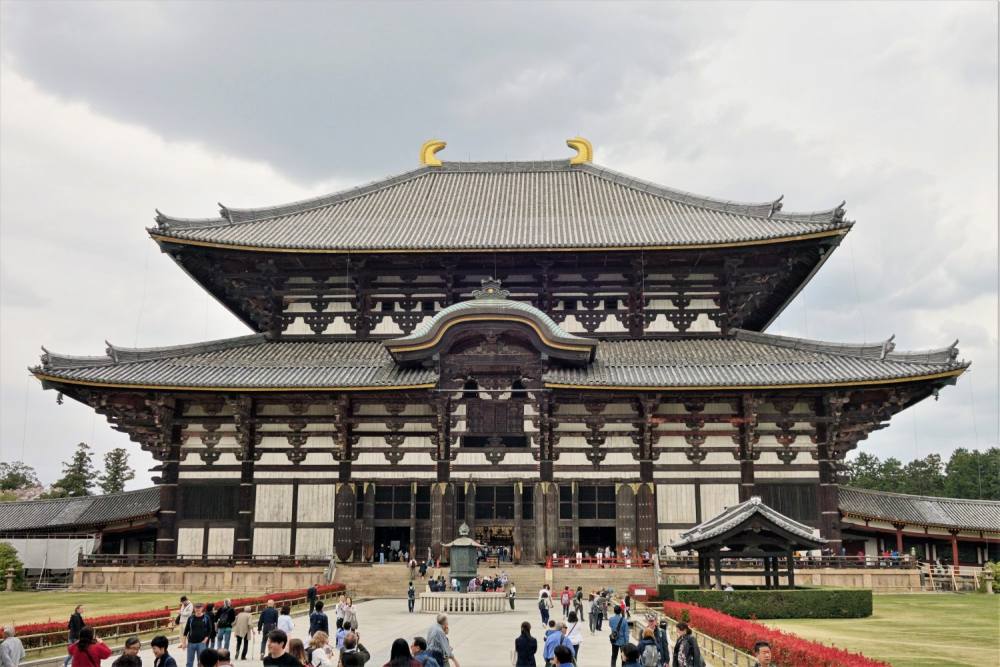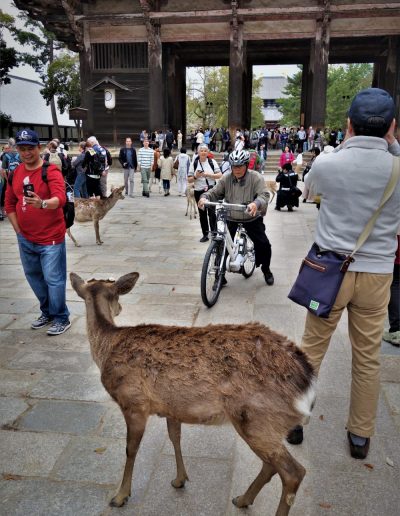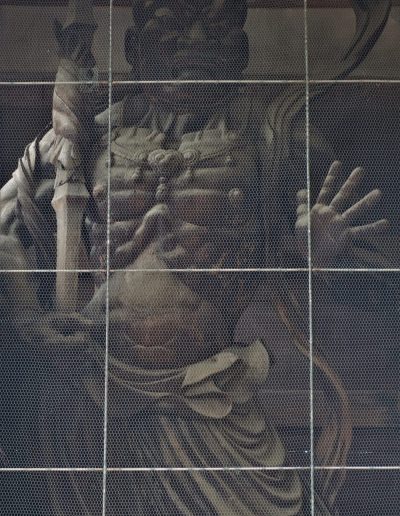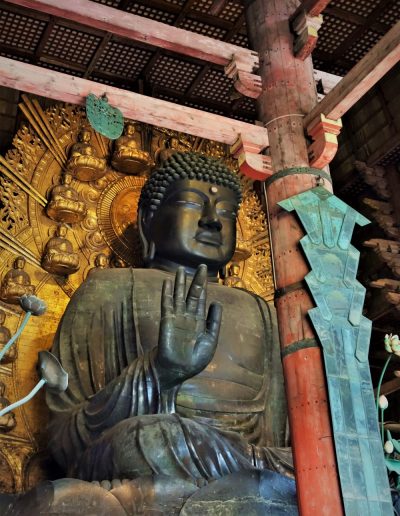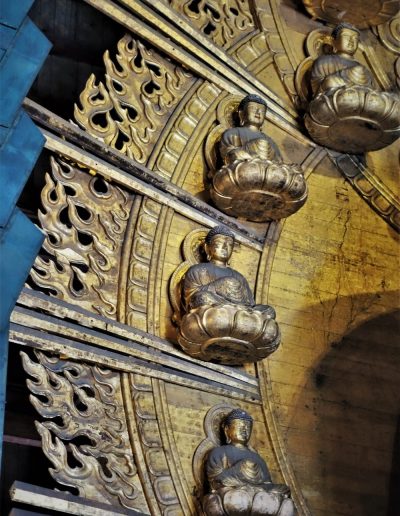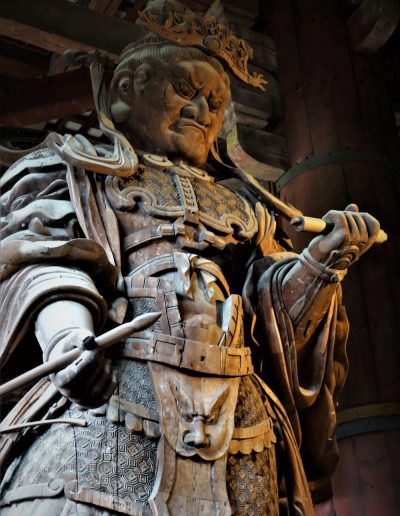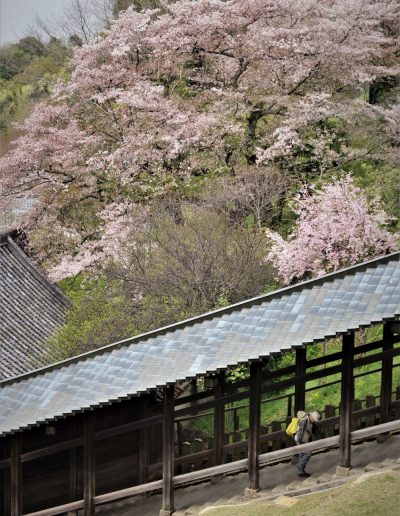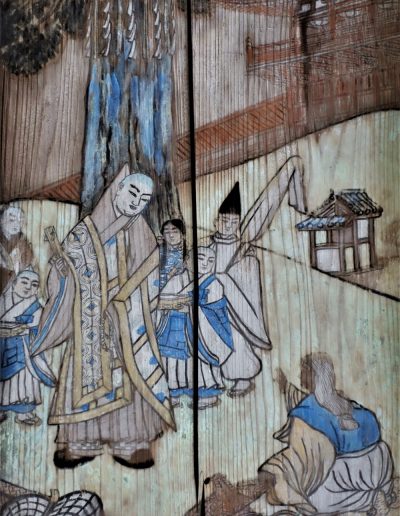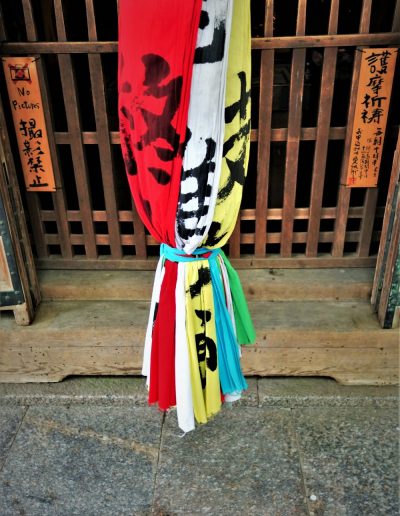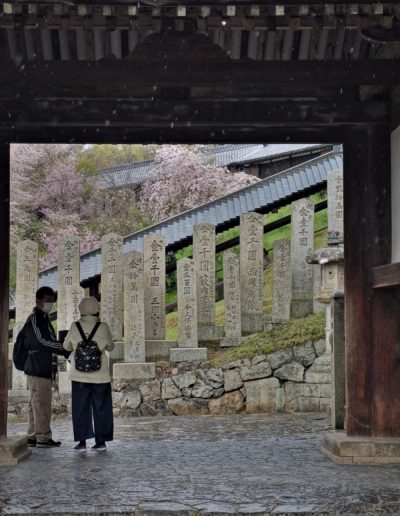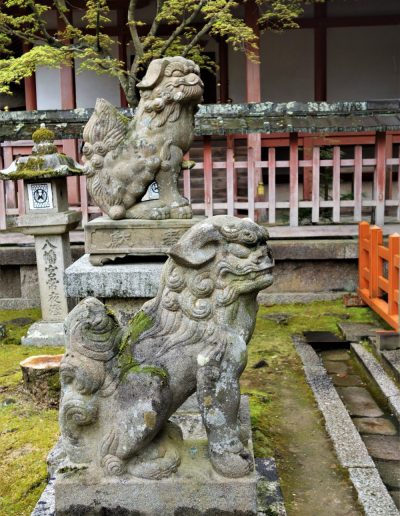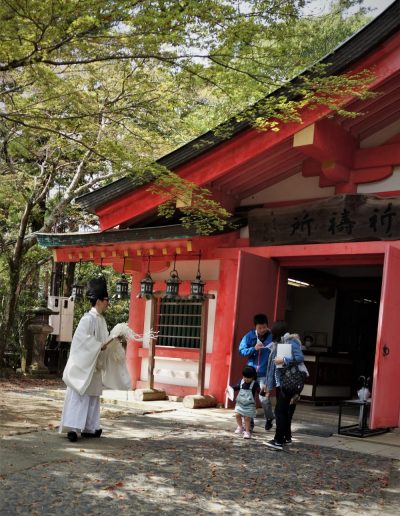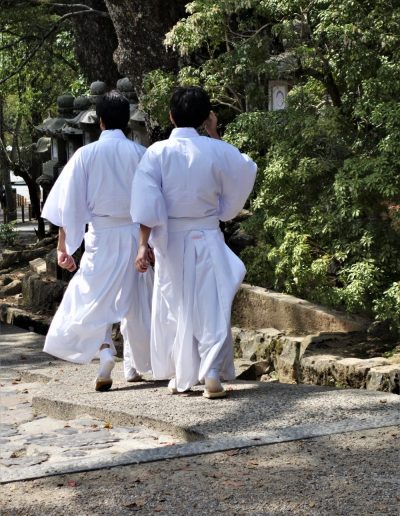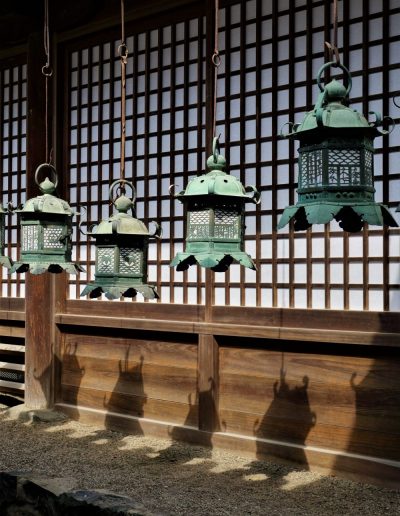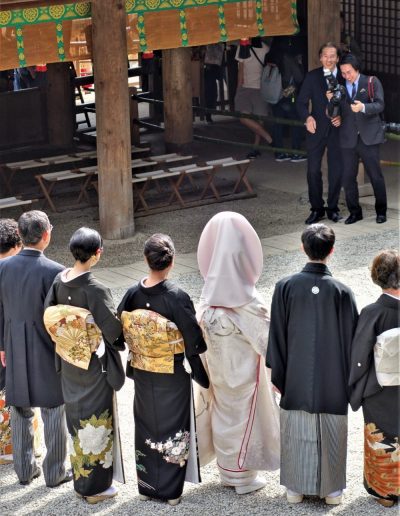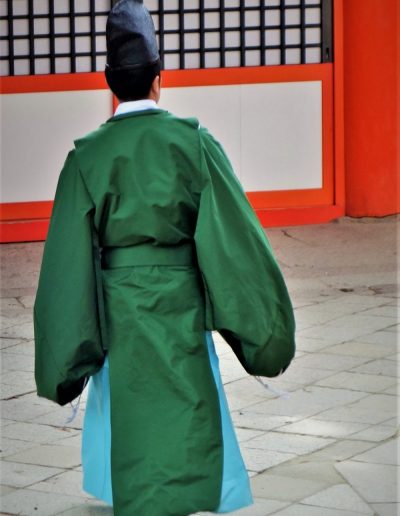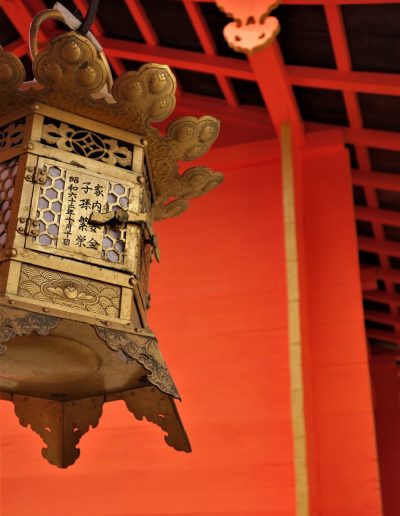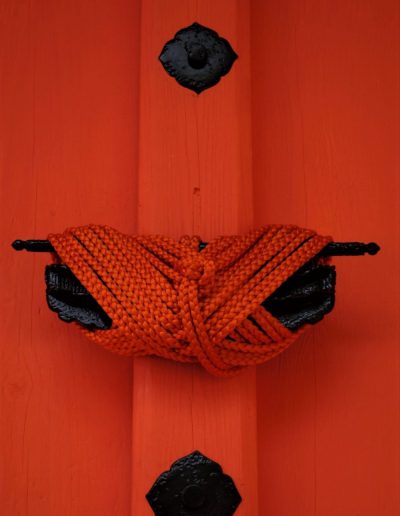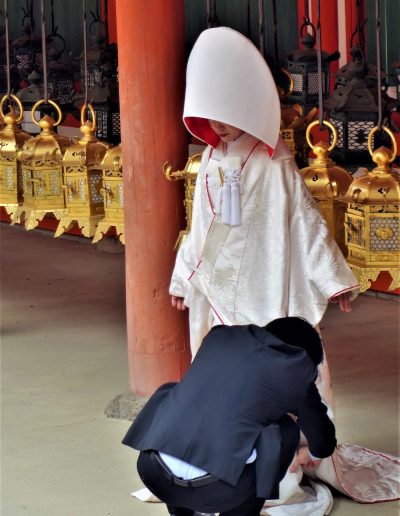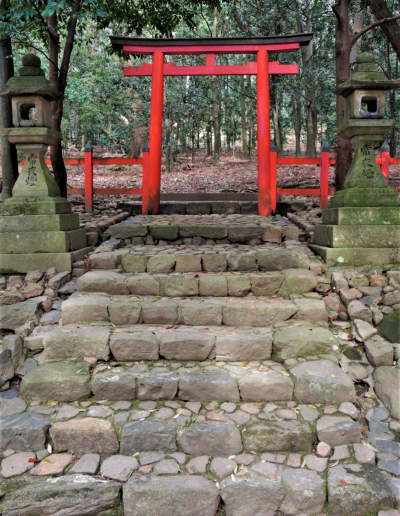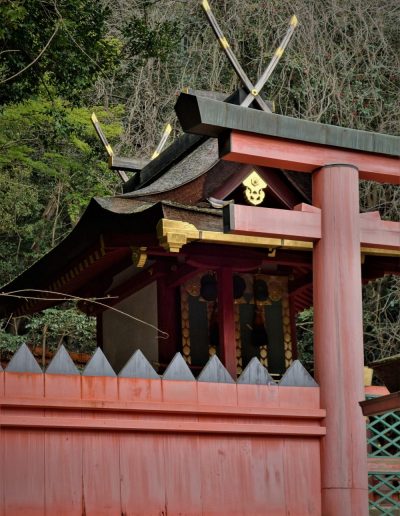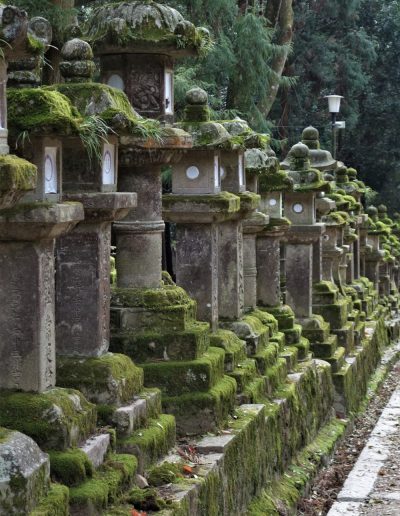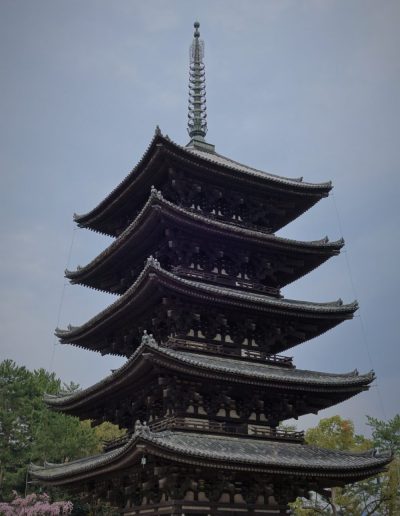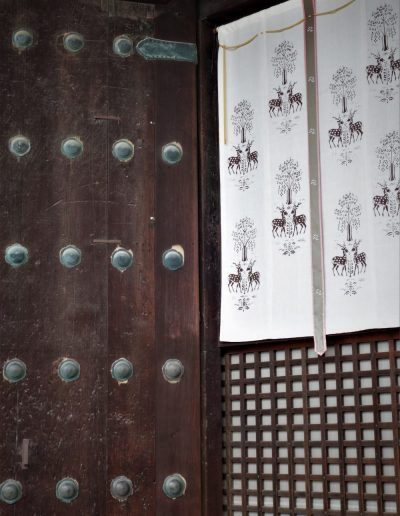- We took a day trip to Nara.
- It was established as Japan’s first permanent capital in 710. Over the next 75 years, the influence and ambitions of the Nara’s powerful Buddhist monasteries became a threat to the government, and it was decided to move the capital first to Nagaoka-kyo (in 784) then Kyoto (in 794).
- Although brief, Nara’s time as the capital left a rich legacy. Losing that mantle meant it was spared much of the war damage subsequently wrought on Kyoto. As a result it has an impressive set of World Heritage monuments with eight sites encompassing 78 buildings.
- It was crowded as we walked from the station towards Nara-koen, the park that houses the main sites, with Nara’s ‘wild’ deer adding further excitement. The grand temple of Todai-ji was our first stop. Its Daibutsu-den (Great Buddha Hall) is the largest wooden building in the world and the Buddha it houses is one of the largest bronze cast statues ever made. Once inside the hall the tourist hubbub died down and we could start to take in what we were seeing. It was a remarkable experience.
- Walking east from the Great Buddha Hall towards Mount Wakakusa, a lovely covered staircase led us to Nigatsu-do Hall. It’s a sub-temple of Todai-ji and has a broad terrace with lots of interesting detail. Sangatsu-do Hall is next door.
- From here we contoured around the foothills of Mount Wakakusa looking down on Nara-koen. Next stop was Tamukeyama Hachiman, a small Shinto shrine established in 749.
- The path led us on to Kasuga Taisha which is Nara’s most celebrated Shinto shrine. It was buzzing with life. Priests and attendents bustled to and fro, and there was a wedding underway. There were lanterns everywhere and gorgeous colours. Kasuga Taisha was the highlight of our day.
- The path skirted the edge of the Kasugayama primeval forest where logging and hunting have been prohibited since 841. It led to Wakamiya-jinja, a small subsidiary shrine of Kasuga Taisha. From there we descended down a path to the centre of town.
- Kofu-ji is a temple transferred from Kyoto in 710. It has two pagodas, one five-tiered (second tallest in Japan) and one three-tiered.
- We left Nara tired and happy, and keen to come back for a longer visit if we ever have the opportunity.

